June 23, 2020 § Leave a comment
Desensitized – Arguing the case for the abolition of aesthetics.
Part 1
In 2018 I held an exhibition at SLOE gallery in Manchester called “Synaesthesia” the exhibition was intended to be an exploration beyond the boundaries of photography. The exhibition featured several works, one of which was Entitled “Digital Photograph 1- 5”
The work consisted of 5 scrolls each roughly 12 feet in length, on them was typed the entire binary code used to build and display a digital photograph on a computer screen, what’s more, each of the scrolls were hand typed on a Contessa manual type writer.
The delivered piece aimed to show a possible next step within modern photographic practice, a possible glint of where this medium could move to next, although it appeared to move backwards with its execution through the use of a manual typewriter, the work was actually routed within the present through its representation of a digital image, this paradoxical relationship between digital and analogue showed a disregard for the methods of production within photography, which as of the last few decades has become paramount discussion with the rise of digital technologies and editing software’s.
Aside from its main aim as an exploratory and Avant – Garde piece of photography, I feel 2 years later that this piece is the catalyst for further thought regarding the nature of photography and art and its relationship with aesthetics. “Digital photographs 1-5” was presented as an “action piece” of art, it held no grandeur in its way of presentation, it was very simply suspended upon hooks from the ceiling and was typewritten on receipt paper, due to it lightweight trait and its availability to be purchased in exceptionally long rolls, this piece had one aim and that was to deliver its message as quickly and as clearly as possible, it was a literal piece.
Let us head back to Arthur Danto’s explanation of what he believes a piece of art to be, Danto stated that “The artist finds a way to embody an idea within a sensory medium” within the same chapter, Danto reminds us of the early philosophical belief, that knowledge was obtained by turning away from the senses, by not acknowledging the wants and needs of the human body, this belief is evident still within certain religious movements, such as Buddhism and Taoism, where Wu Wei (The path of inexertion) is a principle teaching in some branches.
The wants and needs of the human body, more than often asks that the visual stimuli presented before it, be of a high standard In regards to its aesthetic qualities, people will in general prefer to look at a bright landscape complete with colourful flowers and trees, rather than look at the industrial zones on the fringes of cities, covered in smoke and dirt, inhabited not by flowers and trees, but tired and stressed workers, and large fuel burning machines etc. people don’t go out for trips away at the local dump.
Now, I am not here to advocate one aesthetic over another and I do not wish to go down that route, so we will leave this part here, with the general understanding that people prefer “pretty” objects over “Ugly” ones, what we see as ugly or pretty is generally subjective but we can come to conclusion that the prior statement is pretty much “How the world works” stay with me here. In 1917, Marcel Duchamp, gave what is possibly the first shake up of these conventions, with his work “Fountain”, the work presented was a urinal, removed from the wall and set upon its back within a gallery setting, R.Mutt scrawled across what was now the pieces front.
With “Fountain” I don’t believe that Duchamp intended to directly challenge the notion of aesthetics within the art world, after all if we take a step back, the urinal is actually quite “Pretty” sleek curves run around its contours, the main shape looks like that of a sitting buddha, the R.Mutt is written stylistically, at some point regarding the inception of this idea, Marcel Duchamp must have considered this objects overall appearance, and most likely came to the same conclusion as me, “Yes, it looks pretty good like that”. We now accept that Duchamp’s actual intention was to challenge the idea of what could qualify as an art object or a piece of art, by doing this he opened up an entire new school of art thinking, objects such as “the readymade” became commonplace with exhibition’s and people began seriously discussing what exactly art could be.
We flash forward from this period and land upon the “Fluxus” art group, which is thought to have been started around 1930, by the musician John Cage, Cage is of course well known for his work entitled 4’33” which is performed as 4 minutes and 33 seconds of silence, the Fluxus group were driven by an idea which they entitled “Social Sculpture”, championed and brought to public attention by their poster boy Joseph Beuys, Beuys believed and reiterated his famous line “Everyone is an artist” which he felt encapsulated the philosophy. Fluxus art is characterised by its performance pieces or “Happenings” as they referred to them, not dissimilar from DaDa before it, its performances were grandiose, brash statements, one involving driving Beuys to the scene of the happening in an ambulance, sirens blaring, another involving a silver face painted Beuys talking and walking around with a dead hare.
Fluxus is a fascinating and game changing art movement for sure, but I don’t believe it entirely did away with its consideration for aesthetics, Beuys explanation of his “Everyone is an artist” statement was simple, anything that was a social act was to be considered art, he stated that even the act of peeling a potato “if it is consciously done” could be an artistic act, but his performances were not this clear, as I listed before, his happenings were dressy, he actively used strong symbolism and showy scenes to deliver his messages, he likened himself to a shaman, shamanism is routed in strong symbolic performances, Beuys very much considered the appearances of his happenings, his aesthetic was considered.
Its very easy for me to sit here and begin to look for and poke holes in other practitioners and their consideration for all things aesthetic, but what would an art movement hell bent on the abolition of aesthetics look like? I can list off those that I feel are closest to this idea, and then why they just don’t tick the box… Abstract expressionism, consideration of colour and gesture, Fluxus, consideration of symbols and large public displays, Pop Art is a tricky one, especially Warhol and his replica boxes, I know that Danto has discussed these pieces in depth in “What art is” which is worth the read for sure, so I will just glide my opinion over them for a second.
Warhol’s boxes throw me off, these are aesthetically considered pieces but not directly… mimetic in nature they perfectly mirror the Brillo boxes used to transport goods from the warehouse to the store, if the aesthetic attributed to these boxes is not its own aesthetic but in fact a borrowed aesthetic can it truly be aesthetically considered? Is it aesthetic if its aesthetic is not its own?… you cannot consider the aesthetic if the aesthetic is already considered, right….? For this case with Warhol though and to save any further distractions I am going to say that, due to the level of care he put into constructing his boxes, that these are aesthetically considered, Warhol would put great care into the construction of his boxes, they were made from wood, not the cheap cardboard of the real things, the paint used was acrylic, moved through screen printing, not cheap industrial printing inks, Warhol for all his wants dressed up these boxes, he made them more glorious, like an oil painting of cheap simple fruit, he attempted to elevate the objects above their simple nature through the application of more aesthetically pleasing materials, why not just present the original box Andy?
Now don’t get me wrong, I have made my own fair share of aesthetically considered work, I have sold paintings made with only the aesthetic interest in mind, I have held photography exhibitions where the sole interest in the pieces is their presentation, it is only recently that I have become aware of the limiting nature of this form of production, its dependency on the senses to deliver ‘meaning’ its potential to get in the way of free expression, Wu Wei, and the path of least resistance, however I am yet to make what I think is a piece of art devoid of any aesthetic consideration yet, (31 years at the time of writing) I am hoping to have that moment like the cubists when they turned around one afternoon and was all like “Lets just drop perspective today… its limiting” to create a free piece of emotional or mental expression that is not dependent on the senses, which as we know are so easily deceived, and not to be trusted, Rene Magritte, I’m looking at you.
Aesthetics are intrinsically linked to art, when discussing art, audiences will discuss a pieces sensory qualities first, a paintings colour palette, the key a piece of music is written in, a sculptors rendering skills, and I think this is where the difficulty will lie in the advocation for the abolition of aesthetics, art is stuck in its ways, so much so, that our understanding and complete idea of art is built with aesthetics in mind, the two ideas are conjoined, and inseparable, I have no idea what art without aesthetics would look like, but I believe it is worth the investigation and the time, to tread down this otherwise unexplored area of art, I feel desensitised to the understanding and purpose of art, due to arts unwavering loyalty to aesthetics, and I feel with the growing digital age, that our easy exposure to high quality on tap imagery, is also desensitizing us to the capabilities of creativity outside the realms of the aesthetic.
For 2 years I have organised and ran a tuition project in Hyde, just outside of Greater Manchester called PEA Smart. PEA Smart focuses on photography, Art and creative writing, delivering workshops and group sessions in these educational areas, we have worked with the home educated community, SEN young people and local referral services, the main aim of our project is to instil and develop a creative practice and way of thinking within our students, removing the emphasis placed on developing skills, such as drawing fundamentals, and photographic and paintings techniques, that many schools seem to base their art curriculums on.
In the years working with PEA Smart, what I have found most difficult is leading my students away from the aesthetic expectations that they bring to their work, a lot of the students are fed their creative influences through media such as Instagram, and Facebook, and although I advocate these websites for their research purposes, I am also aware of their superficiality, there’s very little to no discourse with the artists on the art pieces, captions are often short and non – comprehensive, the work is taken at its aesthetical value, at its sensory value, almost on the level of instant gratification, “it looks nice, I like it, lets move on”, or even worse, “I want my work to look like that”.
It has been said that although artistic skills can be learnt and applied, it has also been said that creativity cannot be taught, it is seen as an inherent trait that some people possess and others do not, I don’t believe this, I feel that everyone human has the ability to be as creative as they need or want to be, but humans are naturally lazy and they will take the easiest route if possible, and sensory gratification seems to be the route that it is most likely to seek out, aesthetics are more than happy to help with this… telling my students to focus more on what they are trying to say rather than how they plan on saying it, is often met with resistance, “but It won’t look good, It needs to be perfect” this isn’t the student self – doubting, but the result of conditioning based on Aesthetics = Art.
What I would like to propose here is a full extensive investigation into our relationship with aesthetics, I would like to conduct several social based events including socially driven exhibitions that would be led and built by workshop groups, focused on the investigation of aesthetics, I would like to direct my practice more towards the investigation of aesthetics within my own work and I would like to deliver a solo exhibition of this work at the end, supported with a full academic piece on my findings and conclusions from this period of study.
Please Redirect to my lovely new website
December 29, 2019 § Leave a comment
Child Birth as Male Shamanistic Experience – The photographer as performance artist.
November 27, 2019 § Leave a comment
The shaman is said to be born to fit his role, If a woman has not borne a child, for instance, then, according to the belief of the Nanai, in the Amur region of north-eastern Asia, the shaman ascends to heaven and sends her an embryo soul.
Shamanic symbolism is presented through dramatic enactment and dance. The shaman, garbed in regalia, lifts his voice in song to the spirits. This song is improvised but contains certain obligatory images and similes, dialogue, and refrains. The performance always takes place in the evening.



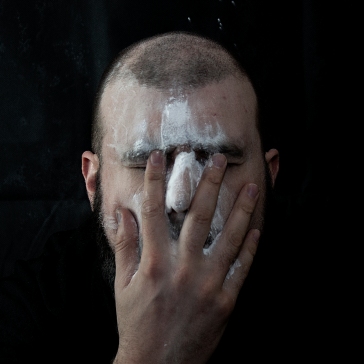
The shaman never paints his body only his face in anticipation of a ritual, the connection between his body and object allows him to transcend spiritual layers and enter the past the future or the present, in anticipation of an event, to bring reassurance or to prepare those for the future.
In these Images the artist has taken the role of Shaman, he has began to prepare himself for the impending arrival of his first child, the artist as chosen to use objects of modern significance in this first series of images of this project, baby powder has been used, to begin the ritual, to anoint the shamans head in preparation.
This series will continue with an audio and visual exploration of a modern shamanic ritual performed by the artist in the role of shaman over 9 months in anticipation of the arrival of new life….
Shaman’s of the Hmong culture, will ritualistically sacrifice a hen and a rooster in the belief that the chickens will be able to chase wandering souls back home, or into a body.
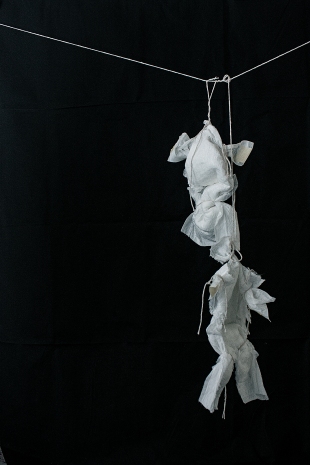
A shaman or a wise elder of the family will take the pair of chickens, with an egg placed on top of a bowl filled with rice and incense and stand it next to the egg. The shaman or wise elder will stand in front of the front door with a circular cymbal, a set of split buffalo horns and “call the lost soul” back home. The chickens part in this ritual is to “help find and chase the soul back home.”
Studies of Gesture…
November 11, 2019 § Leave a comment
I have recently began renting a new studio space, which is adequate size for the paintings that i wish to work on, also the space allows me to work freely when it is free and not being used for our workshops or teaching sessions! The studio in Hyde has been great so far, it has a fantastic relaxed vibe, and i have thrown myself head first into my work 🙂 The below paintings are a study of gesture, unintentionally figurative, they show what happens when gesture is allowed to happen unconsciously and without restraint!
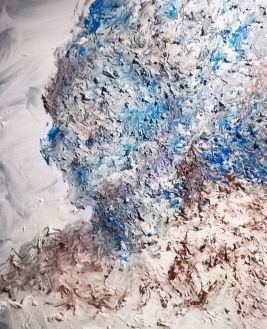
“In Waiting” Acrylic on Canvas, 2019.

“Gesture on Diptych” Acrylic on Canvas, 2019.
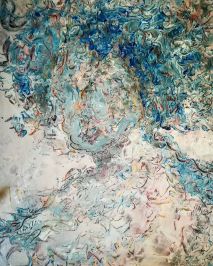
“Over Shoulder” Acrylic on Canvas, 2019.

Work in progress “Weight” Photographed at the studio in Hyde, Acrylic on Canvas, 2019.
I am going to contact some of the local press soon, and see if they would be interested in running an article on the current studio.

Me in the studio with some of my current work.
A piece of free and exploratory writing!
November 11, 2019 § Leave a comment
THE QUIXOTE
I first became aware of ‘Don Quixote’ through the writing of Arthur Danto, and in particular his philosophical art text ‘Transfiguration of the common place’. Danto makes reference to this short story whilst contemplating the idea of originality and authorship in the art world, more to the point, what is originality and why does this give an artwork precedent over any reproduction?

Arthur Danto – Transfiguration of the commonplace.
Danto continues begins his discussion of indiscernible artworks with the use of a fictitious art exhibition, which includes 4 works, all indiscernible to each other in what ‘the eye or ear can determine’, all ‘Red Squares’.

Danto conceptualises these 4 paintings individually, simply naming one, ‘Red square’, then ‘Red Square Moscow’ then to a still life reference ‘Tablecloth’ and then finally towards abstract expressionism ‘Kierkegaards mood’. Danto seems to refer to this conceptualisation of an art work, as the piece’s identity.
Danto considered this metaphysical area of art as key to an art pieces individuality, the red squares proposed by him are not the same images, indiscernible to the eye and ear yes, but vastly different in their conceptual qualities, this leads Danto’s contemplation further, raising questions as to what makes the ordinary become extraordinary through its declaration as art, and further more is a reproduction of an image, poem, or painting, ever really a reproduction or is it something else entirely?
“Pierre Menard, Author of the Quixote” is a literary piece written by Argentine philosopher, poet and writer, Luis Borges. The piece takes the form of a critique of French writer and polymath, Pierre Menard.
Pierre Menard, an eccentric character, has recently undertaken, what is seen as a futile task of recreating and rewriting the 17th Century Novel ‘Don Quixote’ originally written by the Spanish writer, Miguel Cervantes.
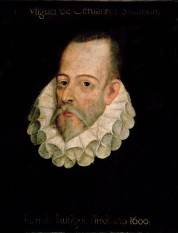
Miguel Cervantes, 1547 – 1667
Pierre Menard, and we must remember that he is fictional, states that he has no intention of rewriting ‘Don Quixote’ in the sense of copying, but rather he wishes to write ‘The Quixote’, his reviewer obliges him during his critical piece on Menard, choosing to pick out a particular sentence from both Cervantes ‘Don Quixote’ and Menards ‘Quixote’ –
“Truth, whose mother is history, rival of time, depository of deeds, witness of the past, exemplar and adviser of the present, and the future’s counsellor.” Miguel Cervantes, “Don Quixote”
“Truth, whose mother is history, rival of time, depository of deeds, witness of the past, exemplar and adviser of the present, and the futures counsellor.” Pierre Menard, “The Quixote”
Following the quotations Menard’s reviewer states that the statement written by Pierre is ‘infinitely richer’ whilst Cervantes is a ‘mere rhetorical praise of history’. This is interesting as the reviewer’s words seem to inform the way in which the reader approaches these two statements.

Luis Borges, 1899 – 1986
This brings us full circle, and back to Danto’s fictional art exhibitions, those titles given to the red squares in ‘Transfiguration of the commonplace’ seems to play the same role as the reviewer (Borges) analysis of the two indiscernible sentences by Cervantes and Menard respectively.
05/10/2019 – Upon current reading, I believe that there are several interesting idea’s at play here,
What is the importance of originality, and what value can recreations and copies hold in the visual arts if any?
How can the idea of fictionalisation be manifested by the visual arts? formulating and encouraging the further study of pieces such as “Erased De Kooning drawing” and using such ideas to explore the meta-fictional relationship proposed by Borges and Menard.
The idea of originality in art and its importance is nothing knew to discussion in art, artists after all have sort inspiration from pre formed external stimuli since the dawning of man, but yet also on a less facetious note, big name players such as Marcel Duchamp, and the somewhat known Andy Warhol, have sort means of “inspiration” from somewhat less obscure external stimuli.
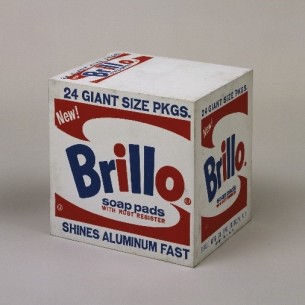
Andy Warhol brilloBox.
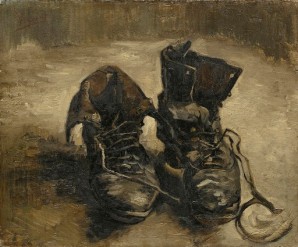
Van Gogh, Shoes.
Fixing time as solid object
August 28, 2019 § Leave a comment

(8 Seconds of time made as Artifact. 2019.)
(Charcoal on paper)
Trying to fix the unseen passing of time into a solid object or artifact, seems to me to be an important if not essential area of human life.
Prized above anything owned or physically held in life, it seems strange that it goes so unseen, the next series of images, paintings, drawings video’s and audio will explore time as a visual and physical object that can be seen and therefore accessed and discussed.
I believe that the only way this “true” study of time can be achieved, is through the complete abstraction of the concept, i do not believe painting clocks, or photographing moments in long exposure, or capturing my appearance over time, will shed any new light on this topic, i wish to create images that almost seem to absorb the time spent, and that seem to hold that time in place, passing time seen fixed.
Photography, performance and personal commentary.
August 15, 2019 § Leave a comment
Current research is currently leaning towards understanding the relationship between, photography performance art and the personal commentary delivered to the artist during the meeting of these two mediums.
Research will begin with the exploration of current and previous performance artists, past research conducted in the area, and then further communication with current practitioners in these area’s.
I have in previous projects explored the idea of performance and in particular performance for the camera, this project explored the relationship between objects memory and the relationship between the people that exchange these objects.

Father please 2017. Arron Hansford.
Throughout the course of this project, i could not help but see these images not as photographs, but as performances in motion, a continuous performance than can travel and move around not unlike a play or stage show.
Abstract Expressionism inspired by thoughts of nature
June 28, 2019 § Leave a comment
Recently i have been experimenting with abstract expressionism painted in oils! The below painting has been completed on a 90×90 Canvas, using oil paint a and a generous amount of Linseed oil! I love linseed oil and the fluidity it creates.
The painting is entitled “Wave 1” and is the beginning of a series of nature inspired abstract pieces that i wish to work on.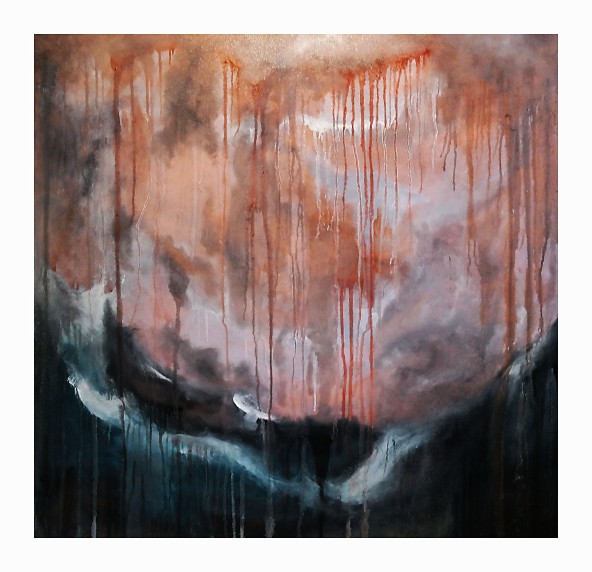
Painting…..
May 25, 2019 § Leave a comment
recently…. or more like this year, i have been focusing on painting rather than photography, which is a bit exciting for me because a year ago i could neither paint nor draw, as i saw it as a dying art, and an unnecessary distraction from creativity, also i was a victim of the painting “is inherited not learnt” disease, either way, i have entered three paintings into the PS mirabel paiting prize 2019, rather ambitiously or other, you decide!
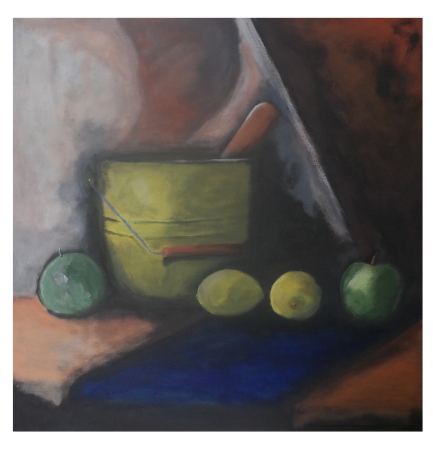
Making Cider
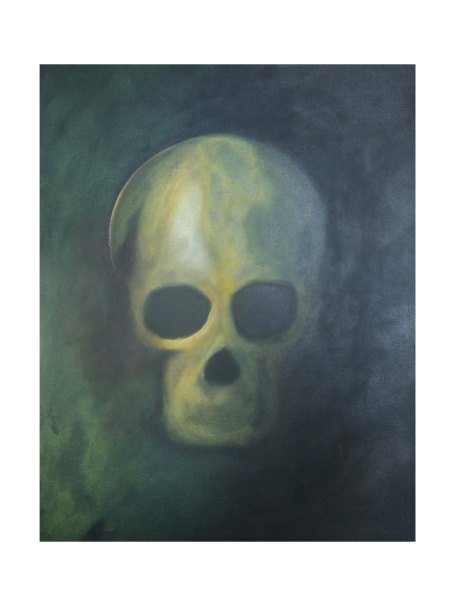
Preoccupation

“I’ve been listening to Elton John”
PEA Smart, and the importance of art in the home school community.
February 5, 2019 § Leave a comment

“To be a teacher is my greatest work of art, the rest is a waste product, a demonstration” -Joseph Beuys.
“Art alone makes life possible – this is how radically I should like to formulate it. Even the act of peeling a potato can be an artistic act if it is consciously done.” – Joseph Beuys
Over the last 2 years I have been running and organising a private tuition art tuition and community group called “PEA Smart”.
PEA Smart focuses on delivering photography, English and Art education to children primarily, but not exclusively, within the home education community. The project began with the idea of making these area’s of education accessible to all regardless of cost or educational background, so far the idea has been incredibly successful.
Perhaps the most rewarding aspect of PEA Smart, is that we have been given the opportunity to see how the arts can help those overcome issues with self confidence problems and social anxieties, in a time where the arts are under attack from governing bodies, I feel that the strong evidence being shown within PEA Smart towards the trans-formative powers of the arts, build a strong case for a re evaluation of the funding available to the arts sector and, perhaps a stronger case that pedagogues should be looking at as a whole.

Student work drying in one of our studio’s, 2019

Portrait by student Jack, created through Photoshop, 2019
Joseph Beuys, a greatly appreciated artist and proponent for arts education, once stated that “Without art, man is inconceivable on a physiological level” , and why would we disagree? when creative acts and the arts are so well known for their guaranteed ability to help develop self realisation and understanding. In 2018 it was reported that 9 out of 10 UK schools had cut funding to their Arts, music and drama departments. We are effectively watching creativity being squeezed from our schools, with Ofsted standing up and claiming that “Academic” qualifications are the most successful route to higher education…. that’s all well and good for academics though…
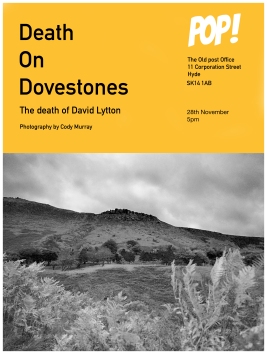
Poster from Student Cody, advertising her photography exhibition, 2018.
During my time within academia, it was never more apparent, that there are different types of thinkers in the world, than when i was at university studying my Masters, this is an institution where the area’s of study are literally divided and separated to different buildings and campuses etc. yes, collaboration between the area’s and subjects was some what encouraged, however there was no doubt in this area that people think, and learn differently, academics, and creatives! Ofsted’s statement in light of this, appears to me to be just lazy Utilitarianism.
Images exploring dementia and mental health, part of a community led project, Manchester art and crafts centre, Arron Hansford, 2017.
The arts has a long well known relationship with health and social issues, it is known for having no boundaries and, more importantly, no entry requirements or expectations, in fact art is something done completely on ones own terms, the world will always require free and independent thinkers, people able to develop and articulate their idea’s and people that can think outside the box, the destruction of creative led programmes in schools, is an attack on free thought and expression.
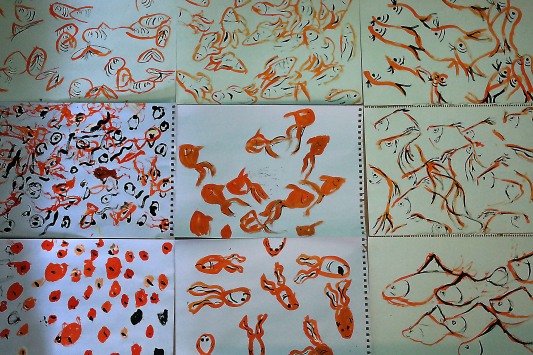
Painting exercise completed with students of pea smart, 2019.
people are not always able to express themselves through usual and familiar methods, such as conversation or the written word, so art itself has become an option that many can turn to, stress, anger, disappointment, depression, all can be filtered through individual expression, if we take away the creative options, then how can we teach younger people to express themselves in alternative yet healthy ways?









